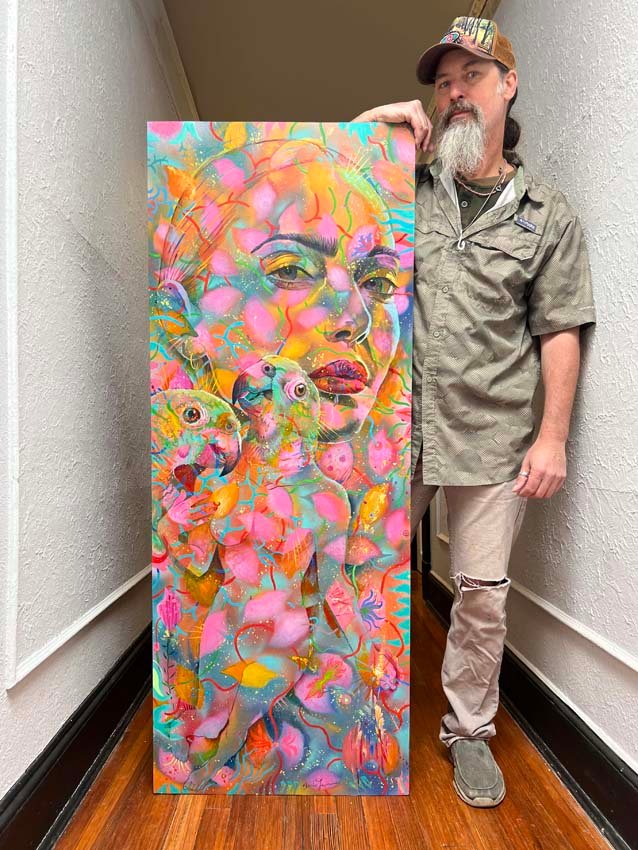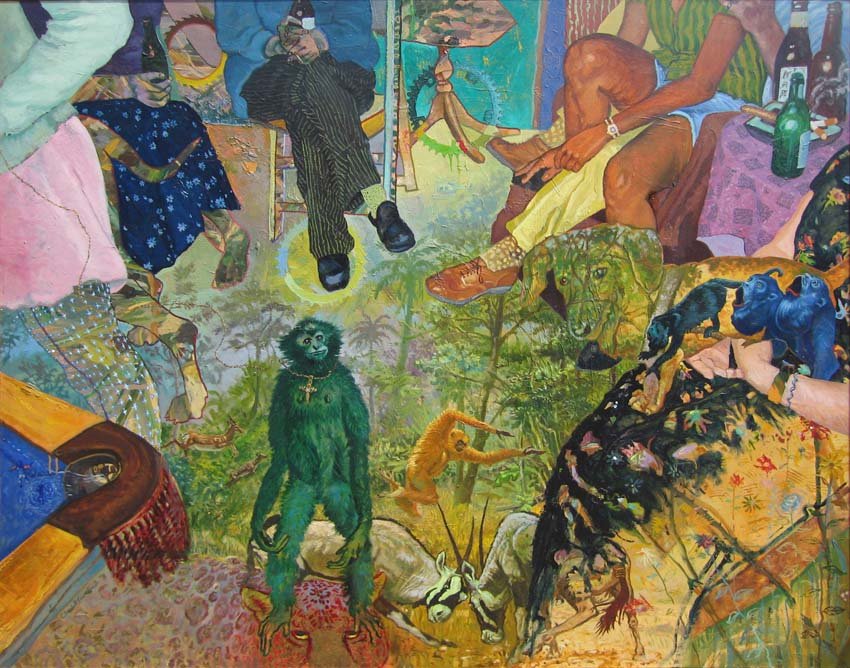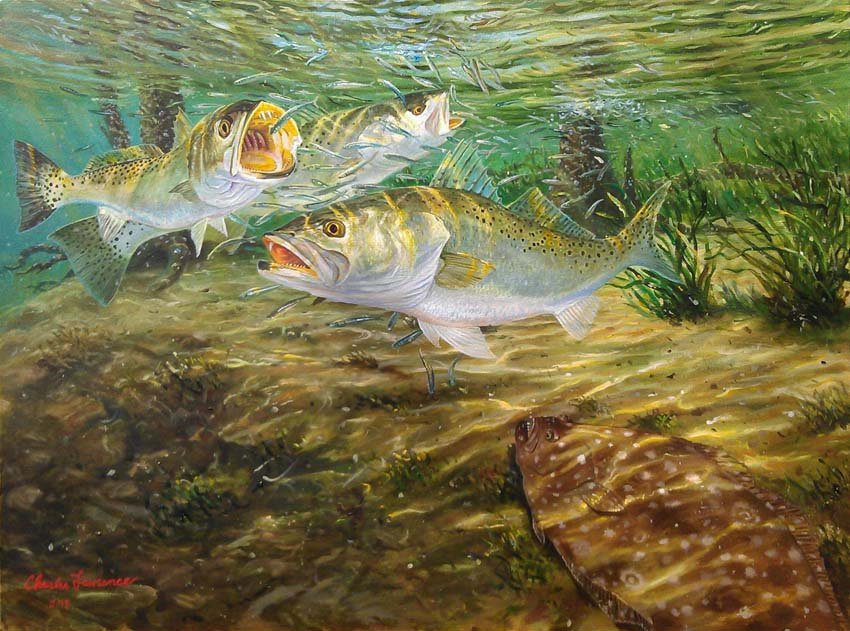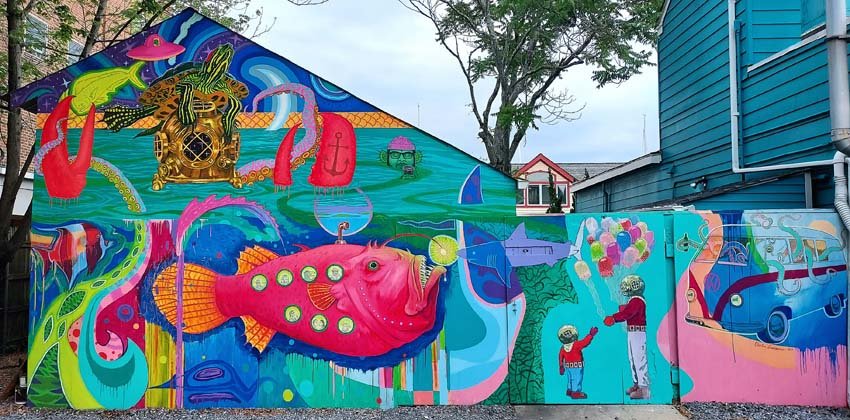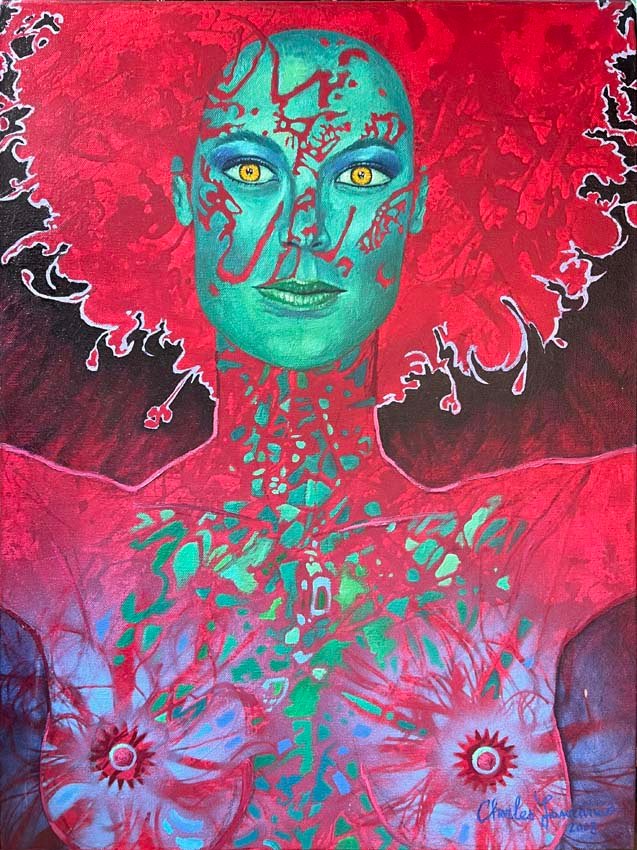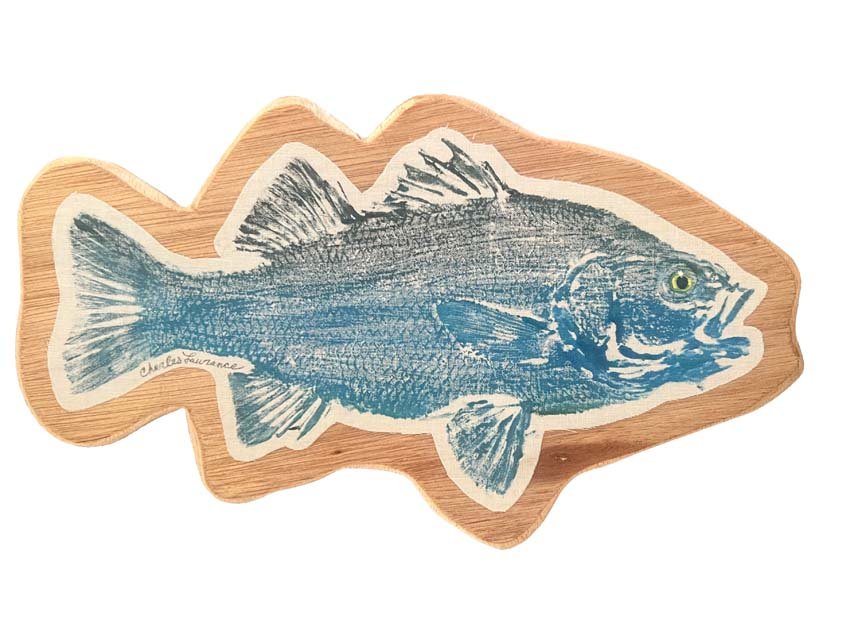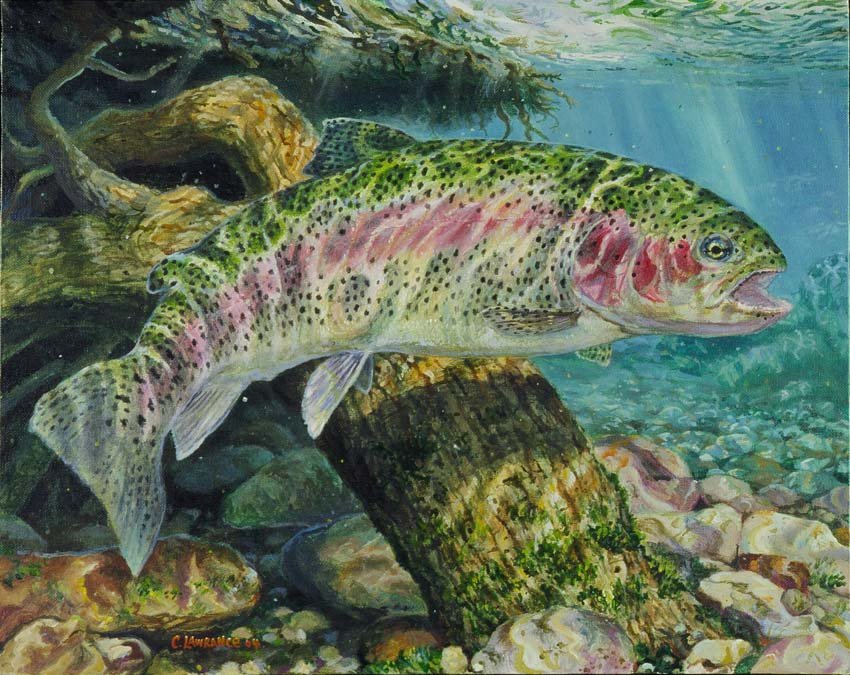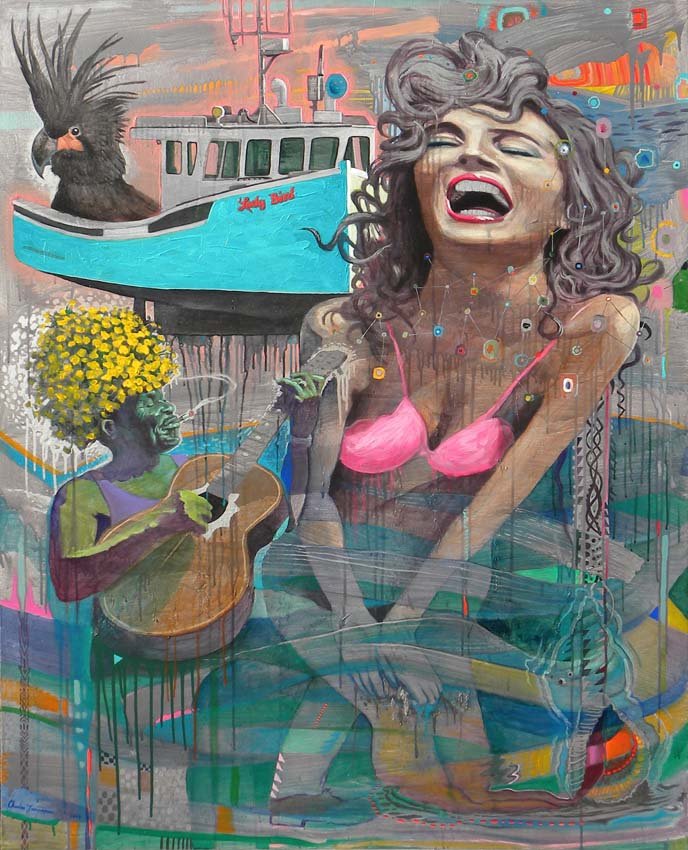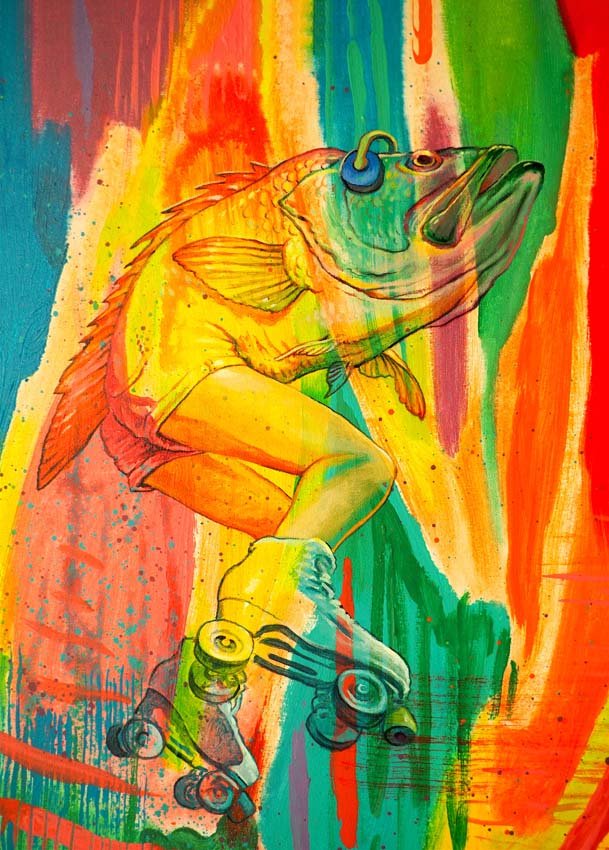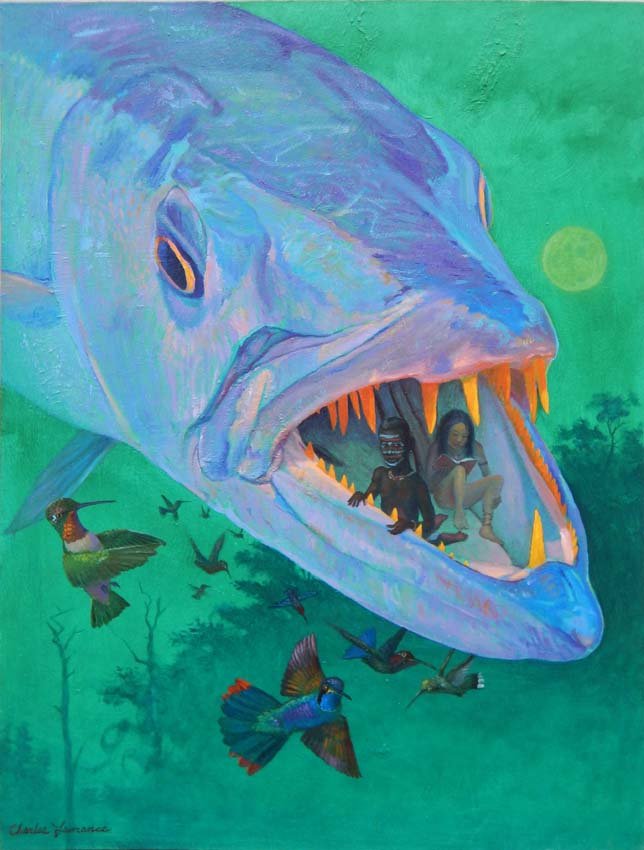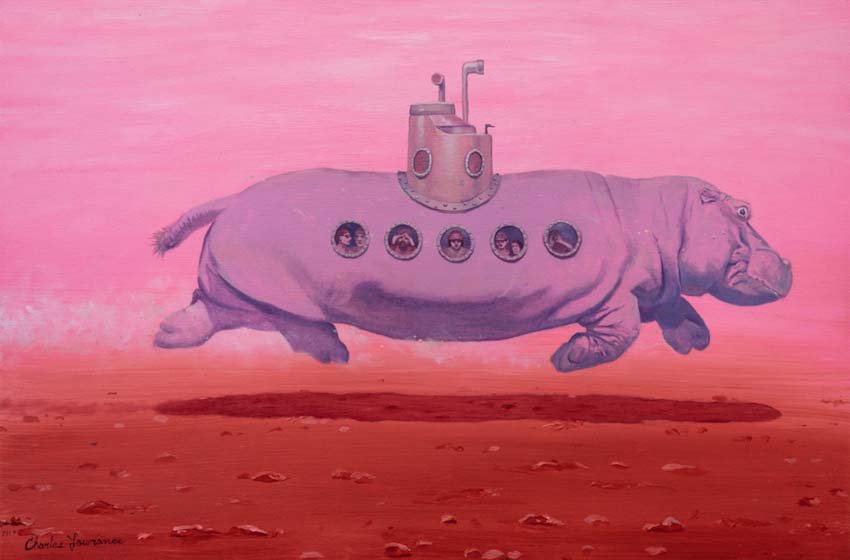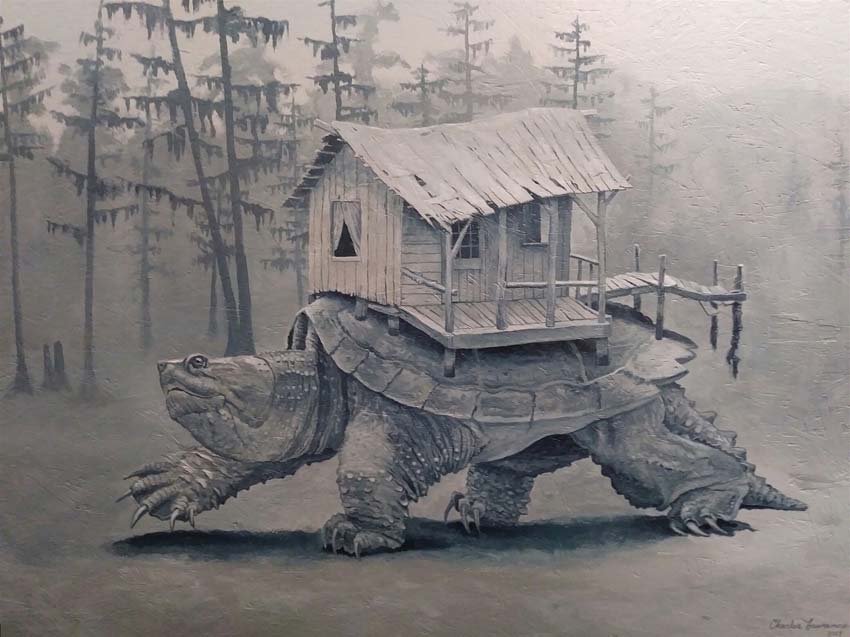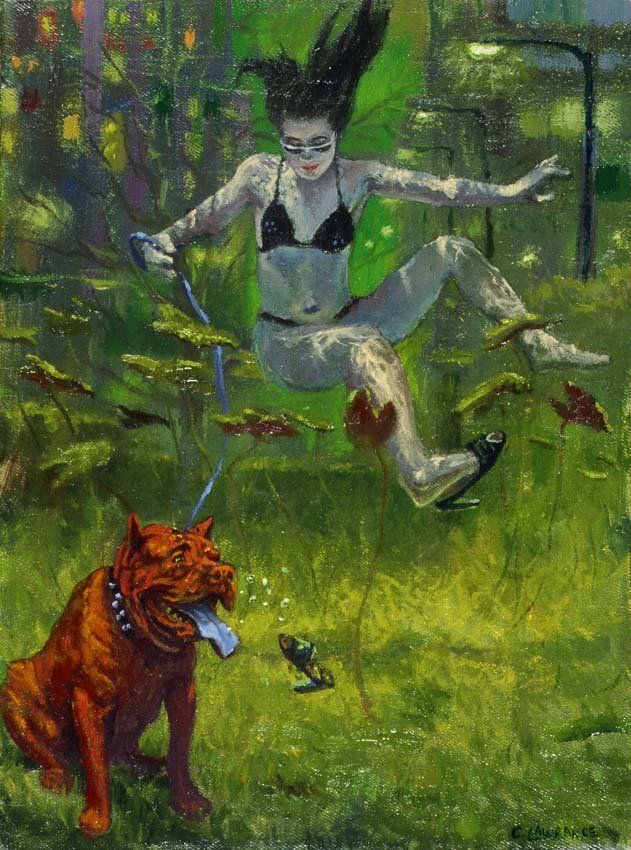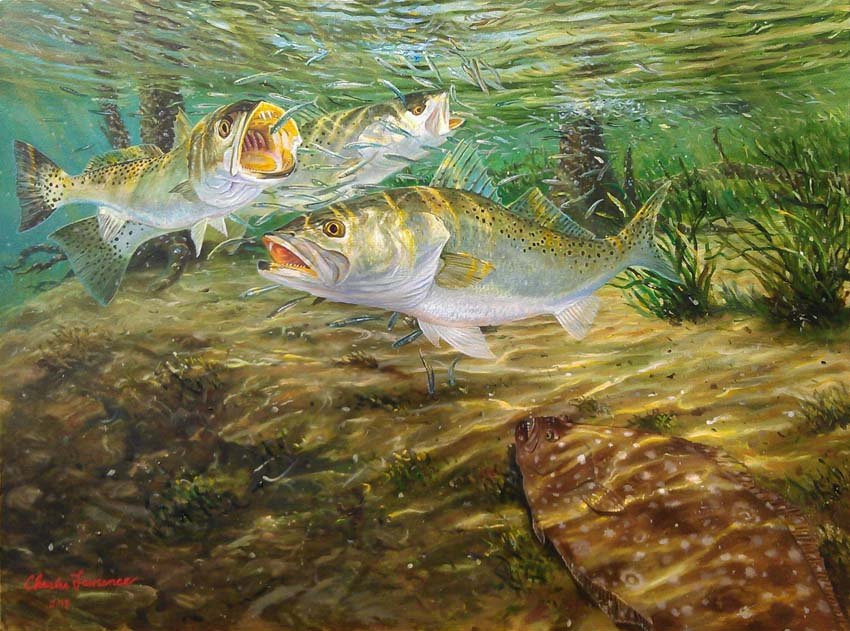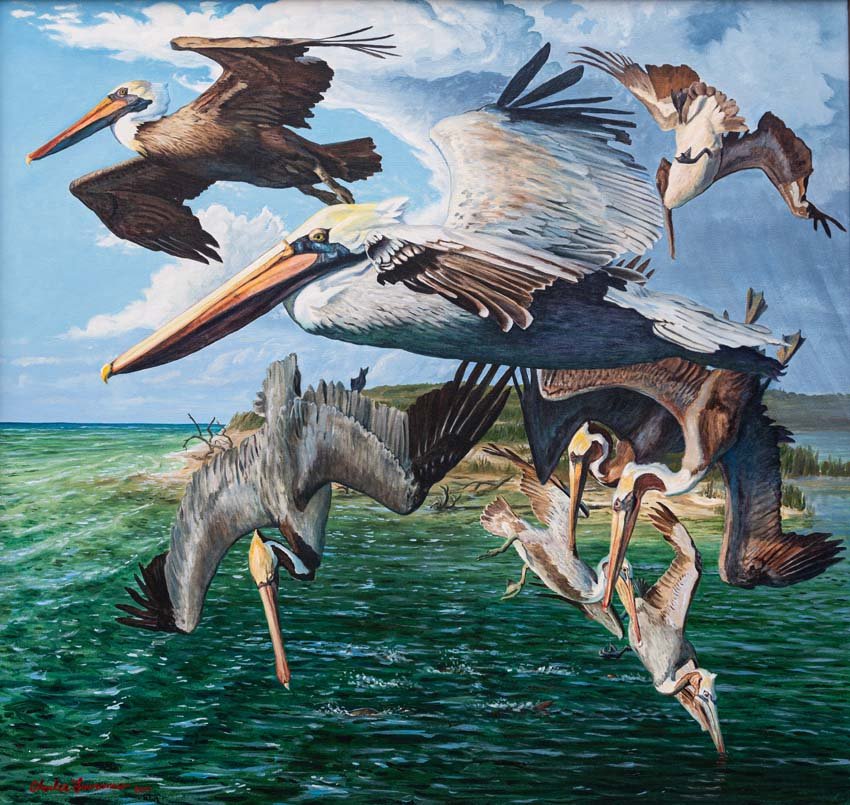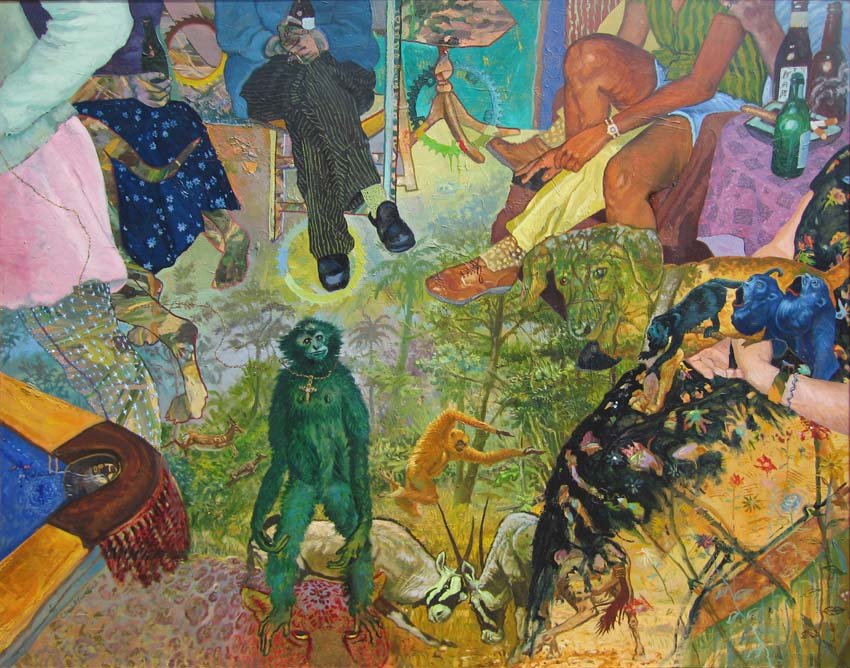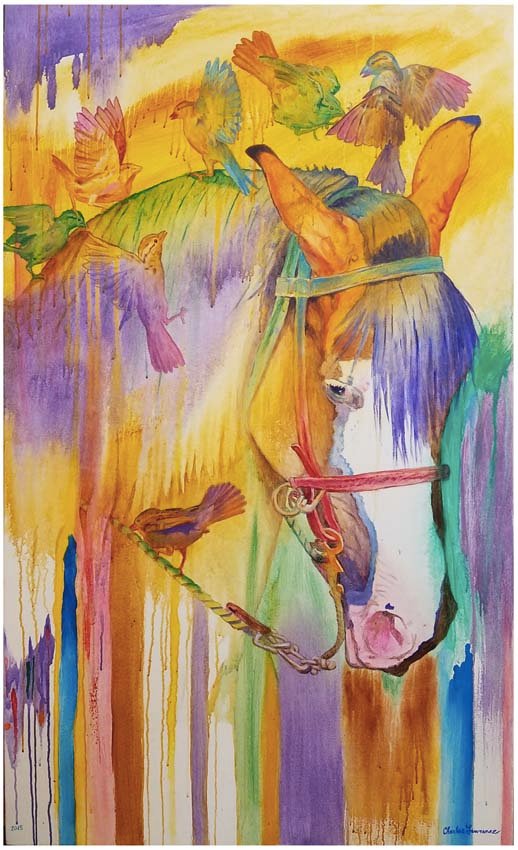+ By Terese Schlachter + Photos courtesty of Charles Lawrance
Charles Lawrance is a fish guy with a real estate problem. Those who’ve hung around Annapolis know that he’s a local artist. He paints, mostly. He paints fish. And other wildlife. But mostly fish. Sometimes he literally paints the fish. He applies acrylic paint to the actual fish. He has dozens, maybe hundreds of fin-ished fish portraits in his two-room-plus-a-hallway studio. Some might say he needs to scale back.
“I’m often working on seven or eight pieces at a time,” he says. “I’ll get one to a point where it’s almost done, then I move on to something else.” On an easel in his workroom is a painting of a grouper, its black eyes piercing through dreamy blues and creamy greens. A scene on one wall involves a couple of playful, monochromatic bass that are seafoam green but for the graceful black lines of their bodies, fins, and scales. Lawrance says he’s only captured the light on that one; the colors will come later. Out in the hall is a painting he made live during the Annapolis Baygrass Music Festival last fall. It features his girlfriend, Kristi Allen, as a mermaid playing a banjo, a large striped bass, and Mr. Purrsley, a Siamese cat; a kingfisher is perched in the corner. Lawrance laid down as much paint as he could during the demo, then brought it home to polish.
Paintings are stacked on the floor, in boxes, and on shelves. There’s enough work to overfill a pop-up store, which he did recently, until that arrangement tanked. Before that, his FinArt gallery had a seven-year run at a studio on 214 West Street. After that, it was at ArtFarm Studios on Chinquapin Round Road, and before that, at a big store in Fells Point where he often hosted musical, artistic, and food truck events—that went swimmingly for 15 years. “Some fun times” is how Lawrance refers to them. But Baltimore’s mortar and urban atmosphere eventually got to him. He’s a fish guy, after all. So, he moved to Annapolis, where the fish are free but wall space comes at a premium.
“There just aren’t a lot of affordable spaces for artists,” Lawrance laments, despite his fondness for Annapolis’ arts community. But he’s not going anywhere. He really can’t stop the fish painting thing. “It’s like breathing for me,” he says, tugging at his longish beard that floats above a water-camouflage shirt and a long fishhook necklace, made by Allen.
It all started in Mahopac, New York, when Lawrance was six or seven years old. There was a stream a couple of miles away from his childhood home. He caught a trout and was hooked. At the same time, he started making things. When his parents hosted dinner parties, Lawrance would entertain guests by making clay dinosaurs. “I could do all of them—a tyrannosaurus, a brontosaurus,” he recalls. In high school, he and his friends bought rock music albums and then copied the covers onto T-shirts and jackets. His youthful artistic side was featured in local newspapers and on TV shows. When it came time for advanced schooling, he chose the Maryland Institute College of Art. “I thought it would change me, but it really just focused my work,” he says.
Eventually, his two obsessions morphed into one: he became an angler-artist who captures on canvas elements of the outdoors, mostly the part of the outdoors that’s underwater. Oh, there are iguanas, monkeys, owls, and the occasional bearded monkey-pug wearing a cupcake. But the fish come in schools.
Lawrance incorporates in his paintings a bit of education or information about the fish’s environment. If the fish is a striped bass, then silversides, those little slivers of shiny fish that striped bass prey on, will be depicted in the scene. They will be warily hanging around or swimming for their lives. If the subject is a bottom feeder, then that’s where they’re drawn, on the bottom, perhaps along with some swishing plant life. “It’s sort of ‘a day in the life’ of a perch or whatever,” he says.
Less textbook are the truly whimsical fish—those who have periscopes and ride unicycles, those who have old ape lips and are adorned with stars. One tows a skier or a standup paddleboarder. Another has a searchlight. There are fish with periscopes that function as headlamps, illuminating the way forward. Some have portholes through which other small creatures peer, seeming as startled as their audience. There is a woman whose human legs fill roller skates, but just around her mid-waist, she turns into . . . wait for it . . . a fish. Buzzing colors surge off cloth or wood or—a helmet? Lawrance holds up the psychedelic, horned head covering and says, “I won a contest at Harley-Davidson with that one.”
Lawrance’s two passions kinetically and materially meet where the slather meets the slime, where he’s truly painting to scale, where FinArt is bona fide. It’s called gyotaku, a Japanese tradition that is hundreds of years old. In the 1800s, Japanese fishers would cover their catches in sumi ink and imprint their images on rice paper to record the size and species of their catches. This catch-logging technique eventually evolved into art. Lawrance calls it his Zen practice.
“First, you have to clean and deslime the fish,” he explains. “Then, you get all your paper ready. It’s a fast, precise process.” Once he’s coated his catch in paint—sometimes just in black, other times streaked with blues and pinks—he presses the paper onto the fish, then very gingerly pulls the paper back. The imprint is far more accurate than one might expect. “You can pull the fins out to really show them, or you can bend the tail slightly to make it look like it’s moving,” he says. He glammed up one snakehead by adding blue sparkles. Always, he paints an eye to “give it some life,” he says, as the model itself has passed on. The prints are popular with customers, who sometimes purchase several at a time.
Lawrance is a naturalist, but you’ll see some of his commercial efforts there and about. He created the former Annapolis Maritime Autowash mermaid sign. And he worked for Red Bull® for a while, incorporating the blue and silver can’s look into everything, from sculptures to skin—he even body-painted models for high-end corporate events.
But he finds himself most at home in one of his half-dozen kayaks, casting for his next catch, be it for a meal, a mural, or both.
For more information, visit charleslawrance.com.
